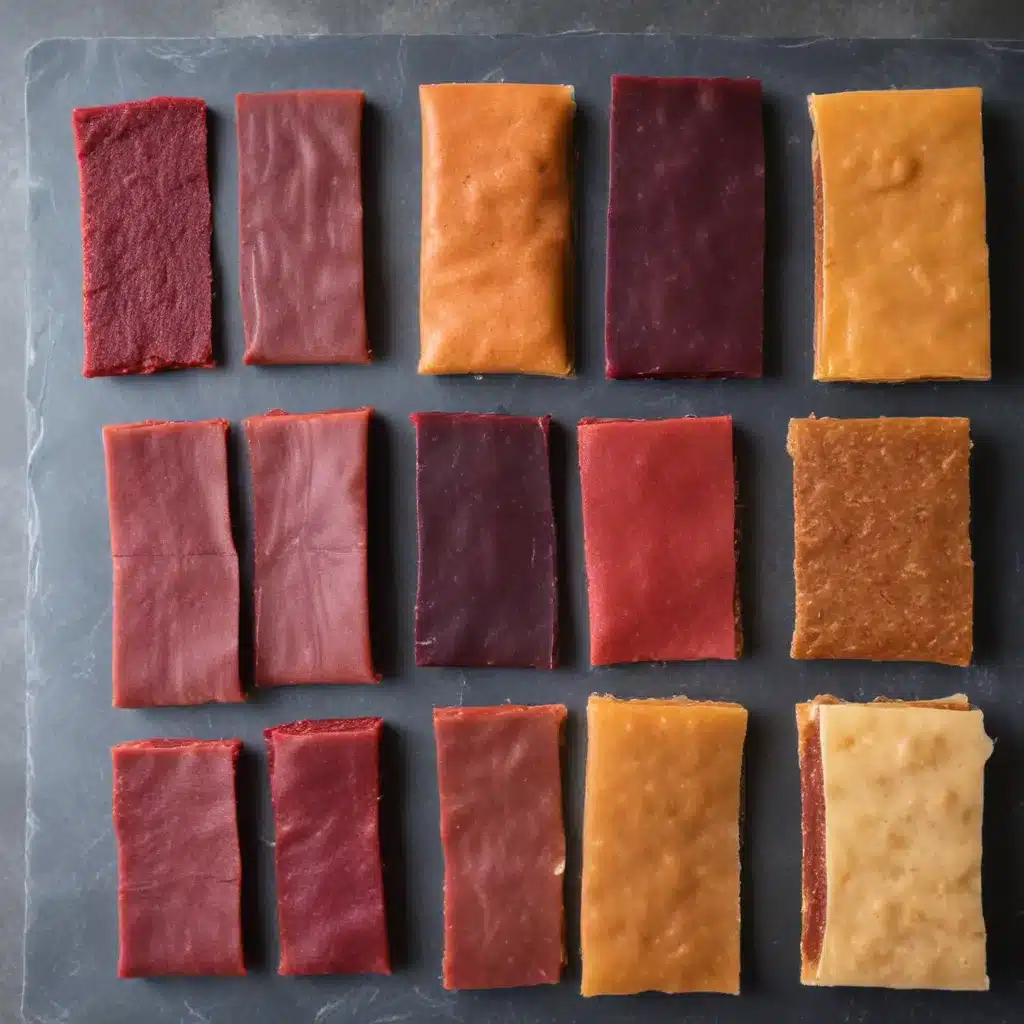
Homemade fruit leathers and dried fruit snacks are a fantastic way to incorporate more healthy, nutrient-dense fruits into your family’s diet. Not only are they easy to make, but you can customize the flavors to suit everyone’s tastes. Plus, these shelf-stable treats are perfect for packing in lunchboxes, hiking trips, or enjoying as an anytime snack.
Fruit Leather Crafting
Making fruit leather at home is surprisingly simple, requiring just one key ingredient – ripe, flavorful fruit. Start by pureeing your chosen fruit, whether it’s sweet peaches, tart raspberries, or a combination of favorites. For best results, opt for fruit that’s slightly overripe, as it will be naturally sweeter. Blend the fruit until it reaches a smooth, uniform consistency.
If your fruit contains seeds or skins that you’d prefer to remove, simply press the puree through a fine-mesh strainer before proceeding. You can also add a splash of lemon juice to help preserve the fruit’s bright color and flavor. Sweeteners like honey or maple syrup are optional – taste your fruit first and only add them if needed.
Once your fruit puree is ready, spread it evenly onto a parchment-lined baking sheet or silicone baking mat. Aim for an 1/8 to 1/4 inch thickness, then place the tray in a low-heat oven (around 140-150°F). Dehydrate the fruit for 4 to 12 hours, checking periodically, until the leather is dried, smooth, and no longer sticky to the touch.
When fully dried, peel the fruit leather from the sheet and cut it into strips or squares using a pizza cutter or sharp knife. For DIY fruit roll-ups, simply roll the leather tightly in parchment paper. Store your homemade treats in an airtight container in the refrigerator for up to a month, or in the freezer for longer-term enjoyment.
Drying Fruit Snacks
Beyond leathers, you can also dehydrate fresh fruit into chewy, flavorful dried snacks. This is a fantastic way to preserve the season’s bounty or use up any overripe produce. Simply slice fruits like apples, pears, or bananas into 1/4-inch thick pieces, then arrange them in a single layer on your dehydrator trays or baking sheets.
Dehydrate the fruit slices at 135-140°F for 6 to 12 hours, until they reach your desired level of chewiness. You can sprinkle the fruit with a light dusting of cinnamon or other warming spices before drying for extra flavor. Once dried, store the fruit snacks in an airtight container in the pantry for up to 2 weeks.
Dehydrator Equipment Considerations
While you can absolutely make homemade fruit leathers and dried snacks in a conventional oven, a dedicated food dehydrator can make the process even easier. Look for a model with adjustable temperature settings, allowing you to dial in the perfect drying conditions for different fruits and vegetables.
Many dehydrators also come equipped with non-stick trays or fruit leather sheets, providing an ideal surface for spreading your purees. This helps ensure even drying and easy removal of the finished product. If you plan to make dehydrated goods regularly, investing in a quality dehydrator can be a worthwhile addition to your kitchen.
Fruit Selection for Dehydrating
The best fruits for dehydrating are those that are ripe, flavorful, and readily available. Some of the most popular choices include:
- Berries: Strawberries, blueberries, raspberries, blackberries
- Stone Fruits: Peaches, plums, apricots, nectarines
- Pome Fruits: Apples, pears
- Tropical Fruits: Mangoes, pineapples, bananas
When selecting your produce, look for fruits that are at the peak of ripeness. Overripe fruits will work well, as their natural sugars will concentrate during the drying process. Avoid using underripe fruits, as they may turn out tough or leathery.
Be sure to thoroughly wash, peel, core, and chop your fruit as needed before pureeing or slicing for dehydrating. Removing skins, pits, and seeds can help create a more consistent, enjoyable texture in the final product.
Flavor Profiles and Combinations
The beauty of homemade fruit leathers and dried snacks is the ability to experiment with diverse flavor profiles. Beyond using just a single fruit, try blending complementary ingredients for a truly unique treat.
For sweet and tart combinations, pair strawberries with lemon, or mix blueberries with a touch of honey. Spices like cinnamon, ginger, or nutmeg can also lend warm, earthy notes to your dehydrated fruits. Feel free to get creative with herb-infused leathers, such as rosemary peach or basil mango.
The possibilities are endless when it comes to crafting your own custom dried fruit creations. Consult seasonal availability, your family’s preferences, and your own culinary imagination to devise the most delectable homemade snacks.
Nutritional Benefits of Homemade Dried Fruits
Homemade fruit leathers and dried fruit offer a host of nutritional benefits compared to their store-bought counterparts. By dehydrating fresh, ripe fruits, you’re able to concentrate their natural sugars, fiber, and beneficial antioxidants – all without the added sweeteners, preservatives, or artificial flavors found in many commercial products.
Dehydrated fruits also retain a higher proportion of their original vitamin and mineral content than fresh produce that has been cooked or canned. This makes homemade dried snacks a portable, shelf-stable way to incorporate more wholesome fruits into your family’s diet.
Whether you’re packing them for lunchboxes, fueling outdoor adventures, or simply enjoying them as a healthy treat, these homemade dried fruits and leathers offer a delicious and nutritious alternative to processed sweets. With endless flavor possibilities and the satisfaction of crafting them yourself, fruit dehydration is a wonderfully rewarding culinary skill to cultivate.


